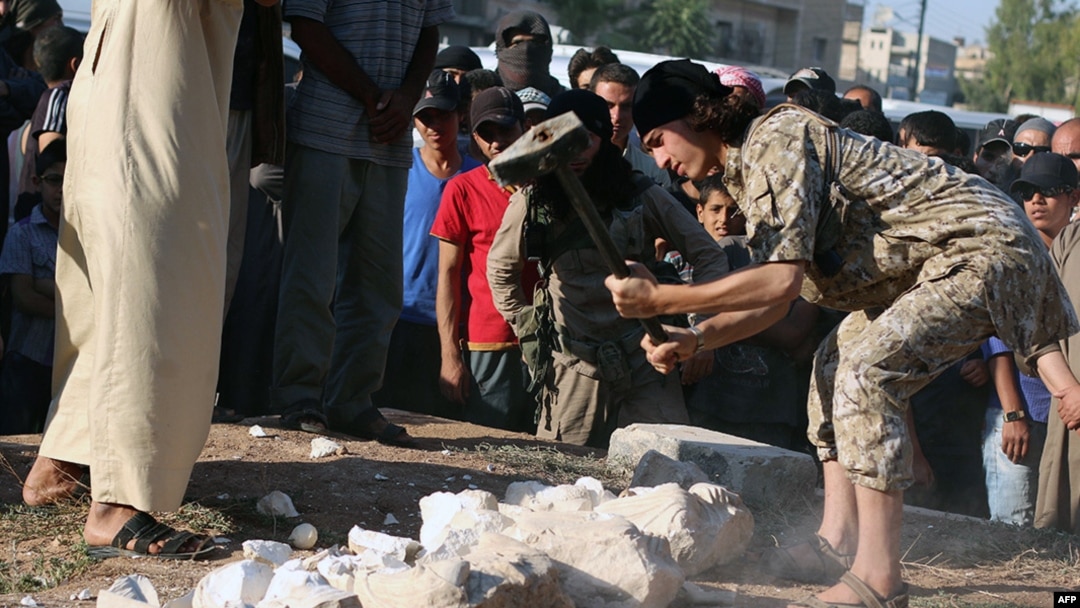The ancient Muslim antiquities from Palmyra that Islamic State said it took from a smuggler and destroyed may have been fakes, Syrian observers said Friday.
The British-based Syrian Observatory for Human Rights said the so-called smuggler might have been an Islamic State member. It said Islamic State might be planning to sell the original statues and that the ones being smashed in photographs released by the militants were phony.
Even so, the chief of UNESCO, the U.N,'s cultural organization, is condemning Islamic State's apparent destruction of Muslim artifacts.
Irina Bokova said Friday, "These new destructions of cultural goods of the site of Palmyra reflect the brutality and ignorance of extremist groups and their disregard of local communities and of the Syrian people."
Among the statues that may have been destroyed is the Lion Statue of Athena, a 2,000-year-old piece that has stood outside Palmyra since archaeologists discovered it in 1977.
Palmyra is a UNESCO world heritage site. Islamic State seized the city in May, raising fears that it would bulldoze ancient buildings and destroy priceless artifacts the same way it did in Iraqi cities.
The extremists regard statues and idols as blasphemous.




